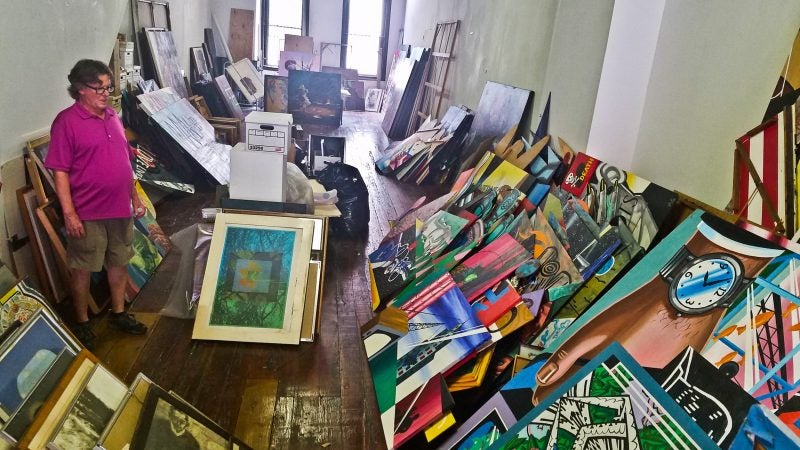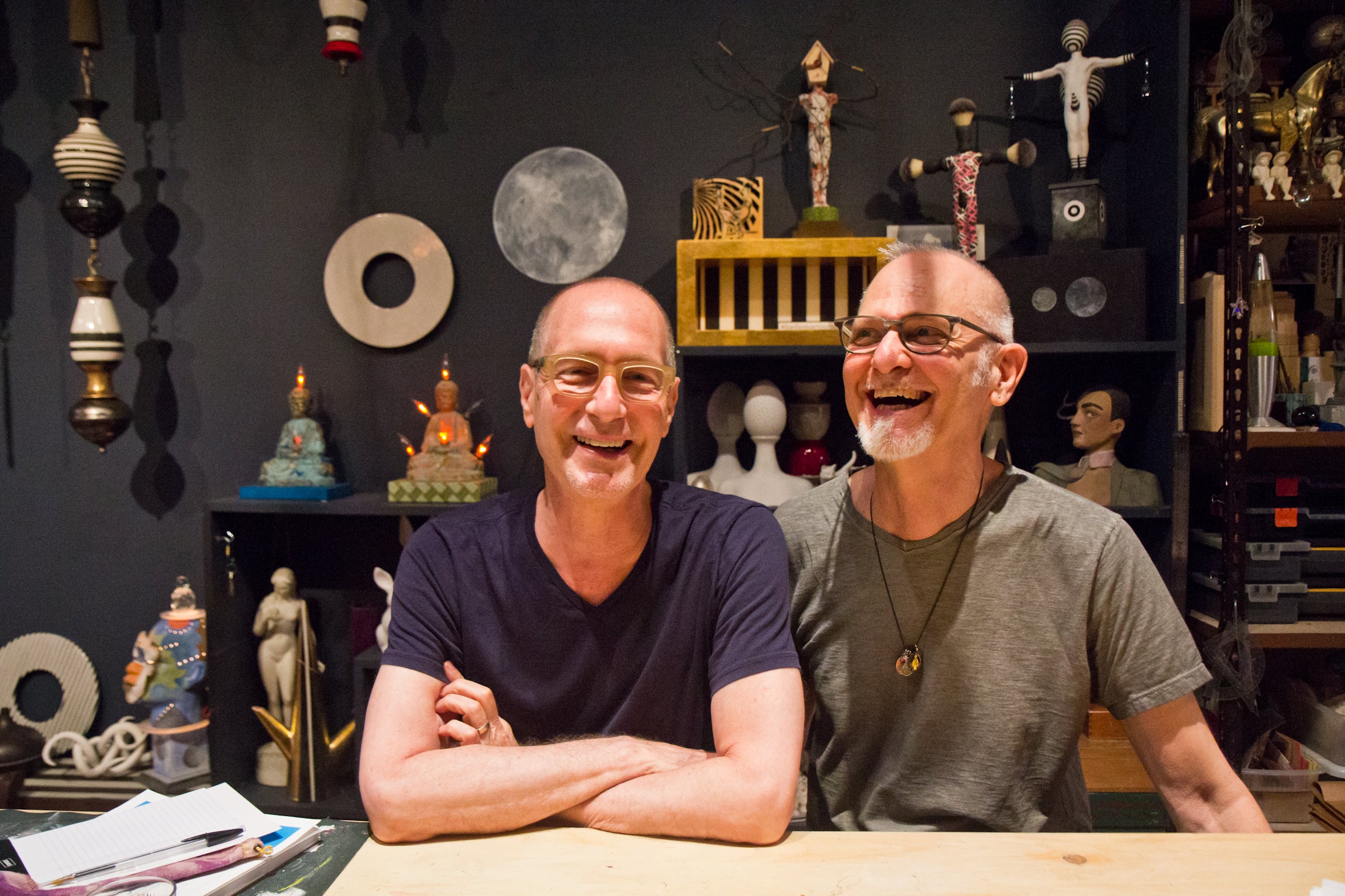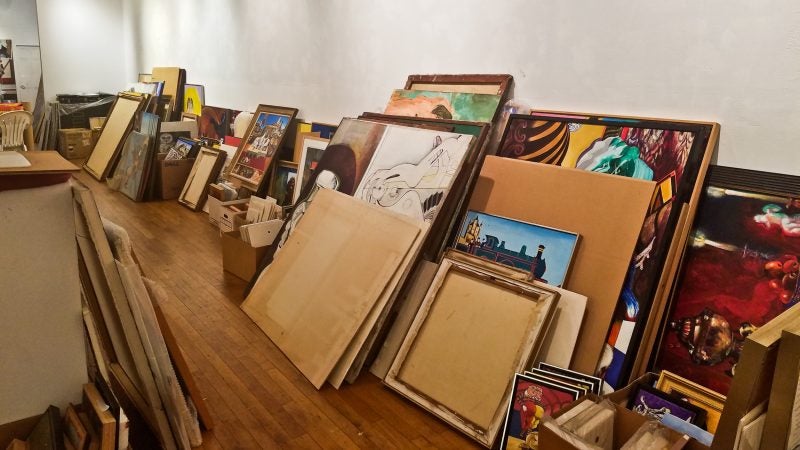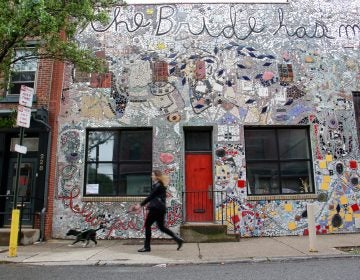The state of art galleries is changing in Philly’s Old City

The Rodger LaPelle Galleries in Philadelphia’s Old City was considered knowledgeable, generous, and reasonably lucrative — but not terribly well organized.
After four decades of buying, selling, trading, storing, championing, critiquing, and rescuing art, the Third Street building is being sold. And the artwork cramming its five floors must be cleared out.
With thousands of paintings still to be identified and claimed, old friends and former colleagues have volunteered to sort through the canvases. They have been stacking work beneath artists’ names written on pieces of torn of paper taped to the wall.
Unsigned work, the artist forgotten, is piled under a sign with a question mark.
“It’s very sad to see this place go,” said artist Fred Danziger, who has been with LaPelle for 43 years. He remembers when LaPelle first started out as Art Patrons in Rittenhouse Square, where artists were hired as employees.
“Rodger put five artists on staff. I was one of them. He took everything we produced and gave us a weekly salary,” Danziger said.
The Pennsylvania Academy of the Fine Arts bought some of Danziger’s work, and at least one ended up in the house of legendary boxer Joe Frazier, a LaPelle client.
“He sold a lot of work; that’s No. 1. He always paid me promptly; that’s No. 2,” said Bruce Evans, another artist with a long history on LaPelle’s roster. “He was a pleasure to deal with. A straight shooter. Always had good advice.”
Longtime client Beth Medoway walked in the door to pick up a small painting she bought two years ago. “It’s a blue green cake. I love this cake!” she said. “I totally forgot about it!”
Medoway estimated that she has bought more than 100 pieces from LaPelle, on whom she depended to identify new artists.
“He went through the student exhibitions, made the contacts, and gave them shows,” she said. “He made the introduction to people like me, who may not have been able to notice that piece that he saw in the student exhibition, that this is an artist communicating strongly and has a career ahead of them as an artist.”
LaPelle was not in the building when Peter Schnore came to pick up one of his works. The aging Latvian artist (“I actually was the father of minimalism in 1965”) maneuvered through the stacks of paintings with a walker. He met LaPelle 53 years ago when they were both students at PAFA.
“I’m astonished it stayed open this long,” he said. “Selling paintings has plummeted. Today, all people want to do is look at their smartphones.”
The days of the art gallery may be on the decline, at least in Old City. The Rodger LaPelle Galleries is the latest departure from the neighborhood. Snyderman-Works, Rosenfeld, Gallery Joe have all left. The Clay Studio will soon be relocating to Kensington.
Significant galleries — Pentimenti, Wexler, and F.A.N. — remain, and crowds still come to Old City’s signature event, the First Friday art crawl. But people are walking into fewer art galleries and more boutique retail stores that dabble in art.
Furniture showrooms, housewares stores, and craft shops are displaying art. Even the neighborhood veterinarian has gotten into the act: Center City Veterinary Hospital will be hosting an opening reception Friday for a show of drawings of dogs.
“The whole idea of going out gallery hopping is sort of changing,” said Medoway.

REMAKING THE NEIGHBORHOOD BY DESIGN
For some, that change is refreshing.
“Before the art galleries, there were artists living here. It was all dancers, actors, musicians, painters,” said Michael Biello, a sculptor who moved into the neighborhood in 1976. “It wasn’t about the art gallery. When the galleries came, the artists had to move away.”
Biello and his life partner, Dan Martin, were part of the original wave of artists who gained a foothold in the vacant factory buildings of Old City the 1970s. They watched as all their friends were pushed out by climbing rents.
“Owning the building is why we’re still here,” said Martin. “We’re some of the last remaining real artists in the neighborhood.”
Biello and Martin own Biello Martin Studio, a storefront gallery and performance space. A handwritten sign in the window reads “Open by chance and by appointment.”
They recently joined the Philadelphia Design District, a consortium of 10 neighborhood businesses – the furniture stores Minima and Moderne, Parisa Rugs, Society Hill Kitchens, the Wexler and Pentimenti galleries, and florist Petit Jardin en Ville – promoting the neighborhood as being not just about art but lifestyle design.
“It’s exciting,” said Biello. “Other people like Jonathan Adler and Matthew Izzo came, they’d wait two years, it didn’t work out, and they left. These are people who are committed to being here.”
He was never entirely comfortable with the proliferation of art galleries in the neighborhood.
“I love art, but there’s a bit of snobbery about it,” he said.
Biello and Martin both see the Philadelphia Design District as a return to what Old City used to be before the art galleries came, when the community of artists depended on one another.
“It does feel like we’re coming back to what first attracted us to Old City,” said Martin. “It’s a feeling that we need each other, and there’s something to be gained from working with each other. It feels very loving.
“Out of that comes everything, including prosperity, including friendship, including longevity and protection.”
The Philadelphia Design District, launched a few months ago, is still finding its feet. It’s planning events for DesignPhiladelphia, a citywide festival, in October.
WHYY is your source for fact-based, in-depth journalism and information. As a nonprofit organization, we rely on financial support from readers like you. Please give today.






